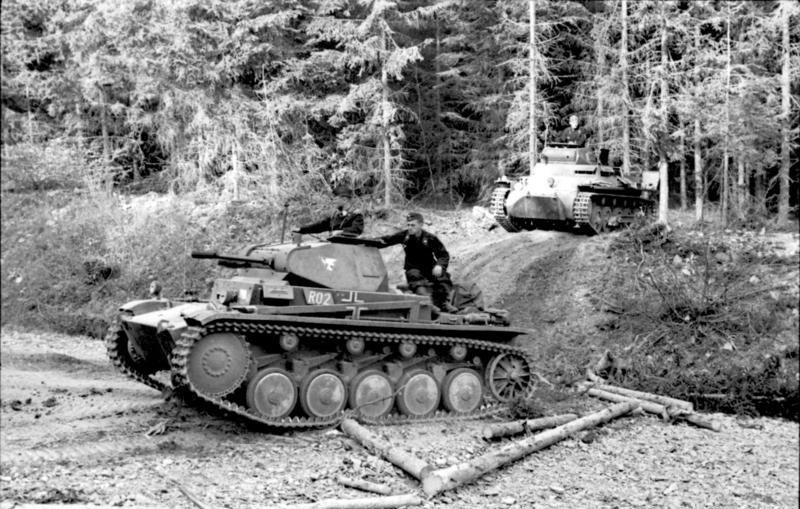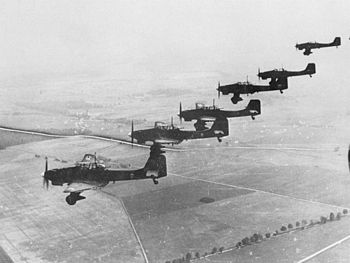Alexander got a new castle playset today, and on the front of the box were pictures of more things than were actually in the box. In particular there was a catapult (in the style of an Onager) and a few other siege engine type things. So in typical four year old fashion Daddy was asked to help with construction of a replacement.
Monthly Archives: April 2010
War in the West: German Plan
At the planning session we had a discussion about the plan to use, we were constrained to the historical planning directive issued by Hitler, but not to the historical operational plan. After a debate we decided not to follow the historical plan as that would allow the Allied player the option to use hindsight against us. Instead we developed a different plan with some different groupings of forces, and also changed the positions of the Army Groups and Armies concerned.
In outline, the main thrust is against the Belgians and it is intended to push onto the Belgian coast west of Antwerp and then sweep down the channel coast to the west (destination Dieppe). The thinking is that the Allies will not allow the British to secure their flank on the sea in fear that they evacuate. This ought to leave the Belgians on the flank and we believe that they are easier to defeat. If they are pushed back then this is likely to cause the British to retreat in fear of their lines of communication and in turn the French also.
Across the remainder of the line there will be a steady pressure so that if the enemy retire we will be able to close up and take any ground that they cede. In the North there will also be a determined assault on the western Netherlands to secure their capital and major conurbations.
All the available mobile forces have been used, and we checked with Jim that we had them all (a few that existed on paper, still forming or training but which played no active part in the campaign have been omitted from the orbat).
The attached documents show the chosen groupings of forces and their tasks. There is a preponderance of mobile forces in the Pz Gp (9 Divisions, 6 Pz 3 Mot Inf) with another mobile corps (1 Pz & 1 Mot Inf) in the flanking Army to ensure that it can also make progress. The remaining 3 Panzer Divisions have been allocated one to each army to allow them to make rapid progress along their points of main effort. In total we have 14 mobile divisions and 11 of these have been assigned to the main effort and will be working in a relatively narrow front, so penny packets is not a suitable description of their employment.
Airborne forces have also been employed to neutralise a choke point 48 hours ahead of the panzer group advance so that they can remain mobile.
The key to the plan is keeping the panzers mobile. I am sure that people can appreciate the importance of this.
PS – have now re-posted this to the brand new Megagamer Forum that I set up for megagamers to discuss games, both before and after.
Book Review – Blitzkrieg Legend

 The Blitzkrieg Legend: The 1940 Campaign in the West by Karl-Heinz Frieser
The Blitzkrieg Legend: The 1940 Campaign in the West by Karl-Heinz Frieser
My rating: 5 of 5 stars
As part of the planning for the megagame War in the West I bought myself a copy of Blitzkrieg Legend because it is the German Army’s official history (although it didn’t get written until the 1990s).
Blitzkrieg Legend Review
From reading the first couple of chapters and looking through the maps you can see the evolution of the German plan. You can see why the directive was written the way that it was in October 1939.
The most interesting thing for me is that there is no concept of a lightning war, the general staffs & high command all believe that the start of the world war was a gross mistake and spells certain doom for Germany as being too soon to be winnable. the strong belief is that the strength of the economy is what wins wars, not surprise attacks (and for my money they were right).
After the planning phase there is a fairly detailed examination of the attacks themselves. What becomes clear is how lucky the Germans were, although some of this is down to the way that the 100,000 man army has trained its troops, and this training continues into the expanded army. It is human factors rather than technology that makes the blitzkreig work. The Germans were exceedingly lucky, when they infiltrate forward and put small parties over rivers and obstacle the enemy retires rather than counter-attacks.
I would certainly recommend this book strongly to anyone who has an interest in WW2, and particularly the Fall of France in 1940.
![Reblog this post [with Zemanta]](http://img.zemanta.com/reblog_e.png?x-id=78dca987-9305-47af-b48d-68a674771819&bmi_orig_img=1)
![Reblog this post [with Zemanta]](http://img.zemanta.com/reblog_e.png?x-id=7fbdc819-6648-446f-a54d-94f64276c366)











